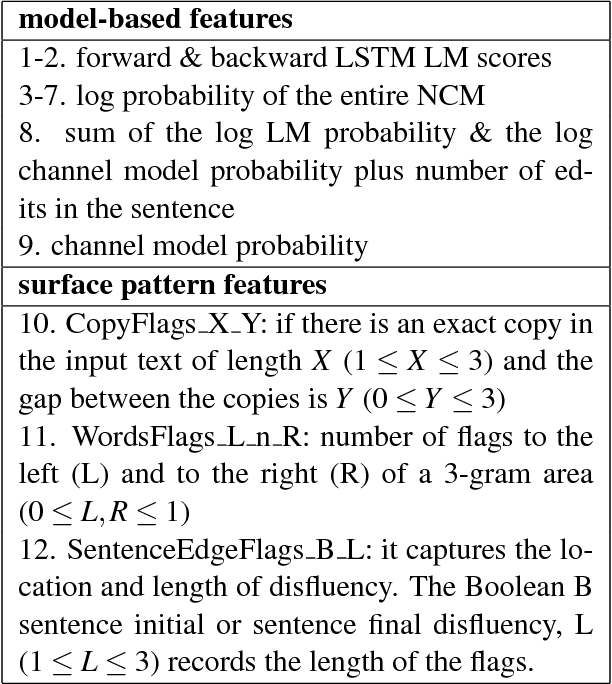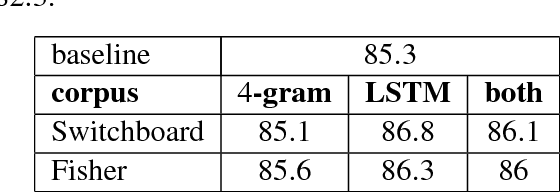Disfluency Detection using a Noisy Channel Model and a Deep Neural Language Model
Paper and Code
Aug 28, 2018



This paper presents a model for disfluency detection in spontaneous speech transcripts called LSTM Noisy Channel Model. The model uses a Noisy Channel Model (NCM) to generate n-best candidate disfluency analyses and a Long Short-Term Memory (LSTM) language model to score the underlying fluent sentences of each analysis. The LSTM language model scores, along with other features, are used in a MaxEnt reranker to identify the most plausible analysis. We show that using an LSTM language model in the reranking process of noisy channel disfluency model improves the state-of-the-art in disfluency detection.
 Add to Chrome
Add to Chrome Add to Firefox
Add to Firefox Add to Edge
Add to Edge